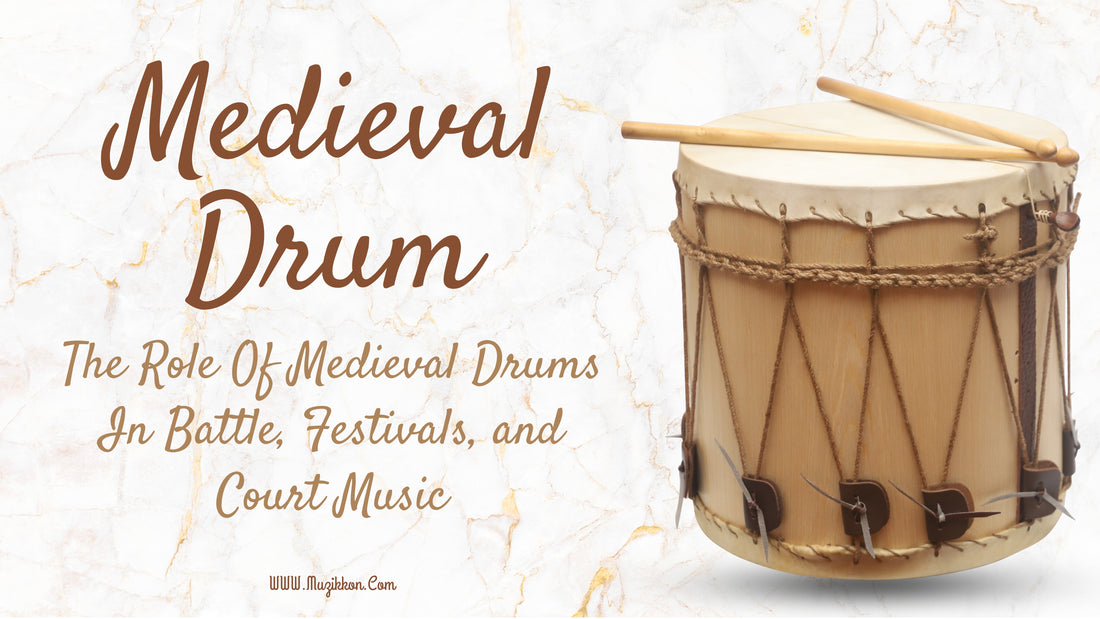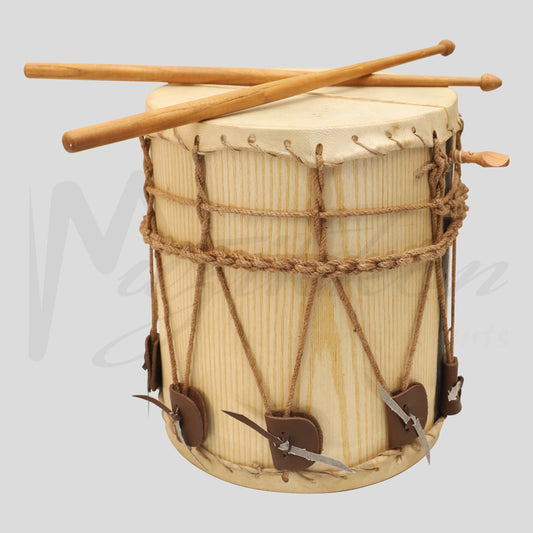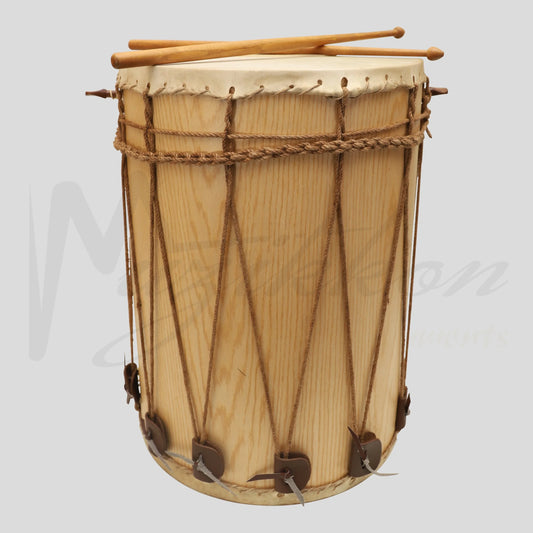Medieval drums played a significant role in shaping the soundscape of the Middle Ages. Their distinct rhythms signaled orders in battle, energized festival crowds, and added depth to courtly performances. These versatile instruments were not just for keeping time — they carried cultural, social, and practical importance.
Drums on the Battlefield: Communication and Coordination
In medieval warfare, drums served as vital communication tools. With the absence of modern radios or loudspeakers, armies relied on distinct drum patterns to convey orders across the battlefield. Different rhythms could signal advancing, retreating, or regrouping. These drum calls were essential in noisy and chaotic environments, where visual signals alone would often fail.
Military drummers were trained to maintain precise timing and clarity, ensuring that soldiers could distinguish between signals even in the midst of combat. The deep, resonating sound of large drums such as the tabor could carry across long distances, making them an ideal choice for battlefield use.
Drumming in Medieval Festivals: Energy and Celebration
Beyond war, medieval drums played a central role in festivals and public gatherings. Percussion added energy to performances, ensuring dancers kept rhythm while adding excitement to parades and street entertainment.
Festival drummers often used hand drums, frame drums, and tambourines, each chosen for its distinct tone and portability. These lively beats provided the foundation for traveling minstrels, ensuring crowds remained engaged throughout the performance. Drums not only maintained rhythm but also enhanced the celebratory mood of medieval fairs, markets, and seasonal festivals.
For those seeking to recreate authentic medieval music for events or performances, explore our collection of Medieval Drums for Sale for historically inspired options.
Drums in Court Music: Precision and Elegance
In noble courts, drums took on a more refined role, accompanying stringed instruments, woodwinds, and early forms of keyboards. While less dominant than in battle or festivals, percussion still played an important part in courtly dances and ceremonial music.
In this setting, smaller drums like the tabor or tambour were favored. These instruments provided a steady pulse without overpowering the delicate melodies performed by lutenists, harpists, or vocalists. The ability to control dynamics allowed drummers to complement rather than dominate the ensemble, ensuring the music retained its elegance.
Craftsmanship and Design
Medieval drums were typically made from wooden frames with animal skin drumheads stretched tightly over the top. Ropes or tension cords were used to adjust the pitch and ensure consistent sound quality. The choice of wood and the thickness of the drumhead significantly influenced the drum's tone — thicker skins produced deeper sounds ideal for battlefield signals, while thinner skins created sharper tones suited for dances and celebrations.
Today, these traditional designs are still reflected in modern reproductions. If you’re looking for authentic medieval-style instruments, Muzikkon offers a variety of musical instruments for sale, including handcrafted medieval drums.
Which Medieval Drum Suits Your Needs?
Whether you're reenacting historical battles, performing in medieval-inspired music groups, or adding percussion to festive events, choosing the right drum is key. Larger drums with deeper tones excel in outdoor settings, while smaller frame drums provide versatility for lively performances or court-style music.
For musicians, historians, or performers seeking authentic medieval instruments, Muzikkon’s diverse range of Medieval Drums for Sale offers both quality craftsmanship and historical accuracy.
Explore the world of medieval drums and discover how these powerful instruments shaped the rhythm of history.








